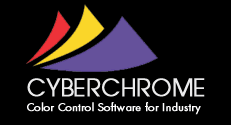 The next fundamental rule in sharing electronic color standards is that the color parameters using in the calculation of the coloriemtric data must be the same.
The next fundamental rule in sharing electronic color standards is that the color parameters using in the calculation of the coloriemtric data must be the same.
Remember to follow the rules given in Tip #1 for sharing electronic color data, which first and foremost is that the instrument geometry must be the same.
Measurement Conditions:
- Is the measurement done via %R or %T? Not all instruments measure both % Reflectance and %Transmittance. It's usually assumed that the measurement is reflectance, but it's better to specify it rather than to guess.
- For a sphere instrument, is it SCI (Specular Component Included) or SCE (Specular Component Excluded)?
- What is the aperture size?
- What is the UV setting? Is the UV included, excluded, or partial?
In OnColor, each measurement is tagged with a status code that identifies the measurement conditions at the time of measurement along with the date, time, and name of the sensor.
Color Space Parameters:
- Standard Observer - Is it 2 degree or 10 degree observer?
- Illuminant(s) - If you are looking at colorimetric data, it's important to specify the illuminant that was used for the calculation.
- Color Space - If you are sharing Lab data, make sure you specify L*a*b* or CIE Lab vs Hunter Lab. The two are very different. If using another color space, be sure to specify exactly what it is so that it is unambiguous.
Each OnColor save-set file contains this information along with the tolerances for the standard.
Be sure to include this information along with the color data whenever you share electronic color standards within your company or within your supply chain.
